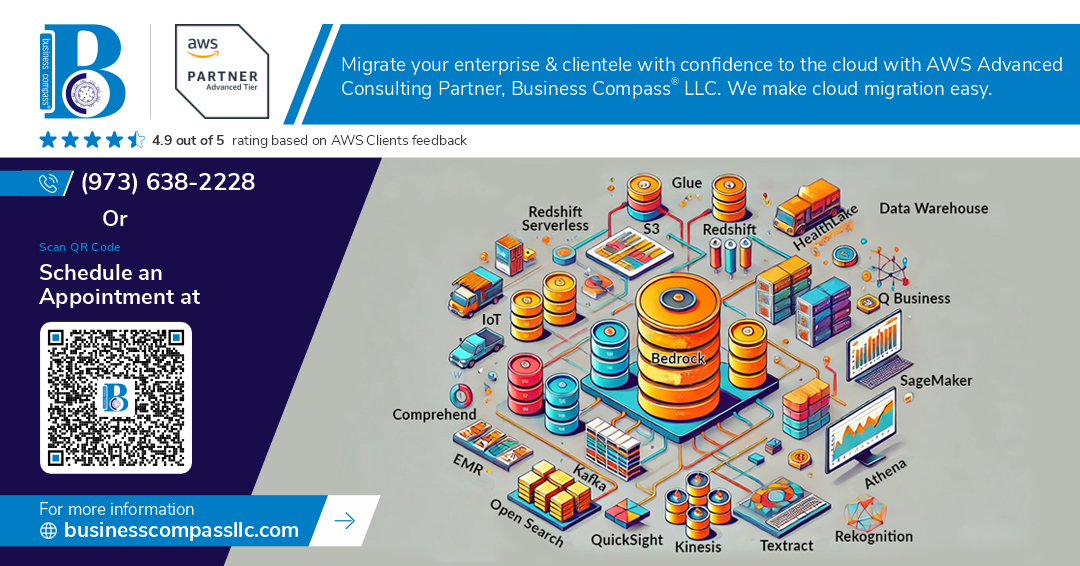What is AWS Glue? A Complete Introduction to Amazon’s Serverless ETL Tool
As businesses generate more data than ever, practical, scalable data integration tools become critical. Enter AWS Glue — a fully managed, serverless ETL (Extract, Transform, Load) service designed to prepare and transform data for analytics, machine learning, and application development. Whether you're a data engineer, a business analyst, or a developer, AWS Glue simplifies the data preparation process across diverse sources and formats.
What is AWS Glue?
AWS Glue is a cloud-native ETL service provided by Amazon Web Services (AWS) that automates discovering, cataloging, transforming, and moving data between various data stores. It enables users to set up data pipelines without managing any infrastructure, making it ideal for large-scale big data processing.
AWS Glue supports serverless execution, allowing users to focus on data workflows while AWS automatically handles provisioning, scaling, and resource management.
Key Components of AWS Glue
Data Catalog
A centralized metadata repository for storing table definitions, schema, and job metadata.
Automatically discovers schema through Crawlers.
Compatible with Athena, Redshift Spectrum, and Amazon EMR.
Crawlers
Automatically scan data sources, infer schemas, and populate the Data Catalog.
Can run on a schedule or be triggered on demand.
ETL Jobs
Code that extracts, transforms, and loads data.
It can be written in Python or Scala using a visual interface (AWS Glue Studio) or scripting.
Triggers and Workflows
Automate and orchestrate ETL jobs.
Supports conditional logic, dependencies, and event-based executions.
AWS Glue Studio
A visual, no-code/low-code interface for building, editing, and running ETL jobs.
Great for rapid prototyping and non-developer users.
AWS Glue DataBrew
A visual data preparation tool for data analysts.
Offers over 250 prebuilt transformations without writing code.
Why Use AWS Glue?
Serverless and Scalable: No infrastructure to manage — Glue scales automatically with your data workloads.
Cost-Effective: Pay only for the time your ETL job runs.
Integrated with AWS Ecosystem: Works seamlessly with S3, Redshift, Athena, RDS, DynamoDB, and more.
Automatic Schema Discovery: Saves time and reduces human error with built-in crawlers.
Developer Friendly: Supports custom scripts and advanced transformations with Spark under the hood.
Common Use Cases
Data Lake Ingestion: Load data into an S3-based lake from diverse sources.
Data Transformation Pipelines: Cleanse and enrich raw data for downstream analytics.
Data Warehousing: Load processed data into Redshift or Snowflake for BI.
Machine Learning: Prepare training datasets from multiple formats and structures.
Getting Started with AWS Glue
Create a Crawler to populate the Data Catalog.
Design ETL jobs in Glue Studio or using code.
Run and monitor ETL jobs on-demand or on a schedule.
Explore output with Athena or your preferred analytics engine.
AWS Glue supports various source and target systems, including Amazon S3, Amazon RDS, Amazon Redshift, and JDBC-compatible databases.
Real-World Benefits
Faster Time to Insights: Automates repetitive ETL tasks.
Improved Data Governance: Centralized schema management via Glue Catalog.
Enhanced Productivity: Visual tools reduce the need for deep programming skills.
Better Scalability: Suits startups and enterprise-scale workloads alike.
Security and Compliance
AWS Glue supports:
IAM-based permissions
Encryption at rest and in transit
VPC support for private connectivity
Audit logs via AWS CloudTrail
These features help organizations meet data compliance standards like GDPR, HIPAA, and SOC 2.
Conclusion
AWS Glue is a robust, cost-efficient, and scalable data integration solution that fits a broad spectrum of use cases — from building a modern data lake to transforming data for advanced analytics. Its serverless nature and tight integration with AWS services make it a preferred choice for cloud-native data workflows.

Comments
Post a Comment